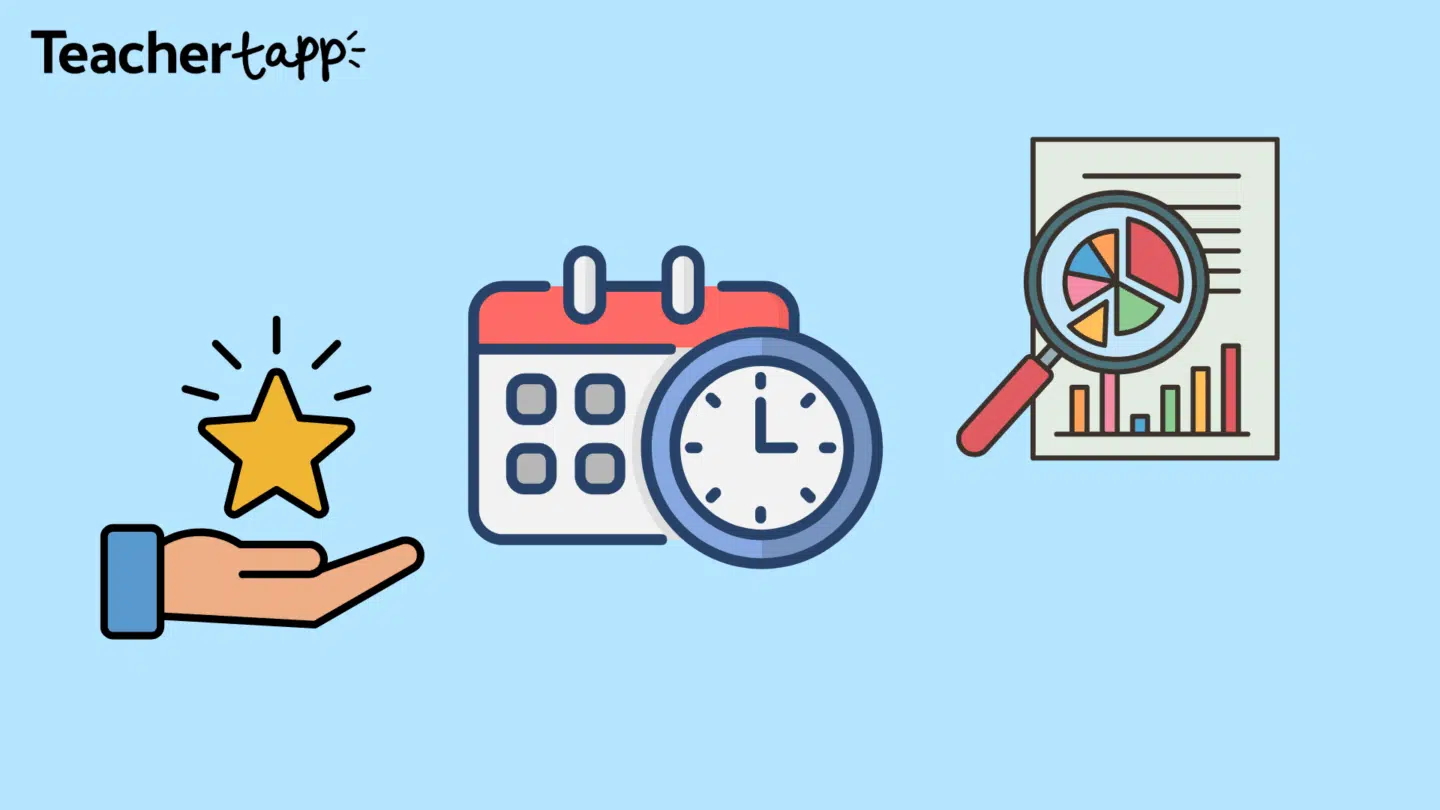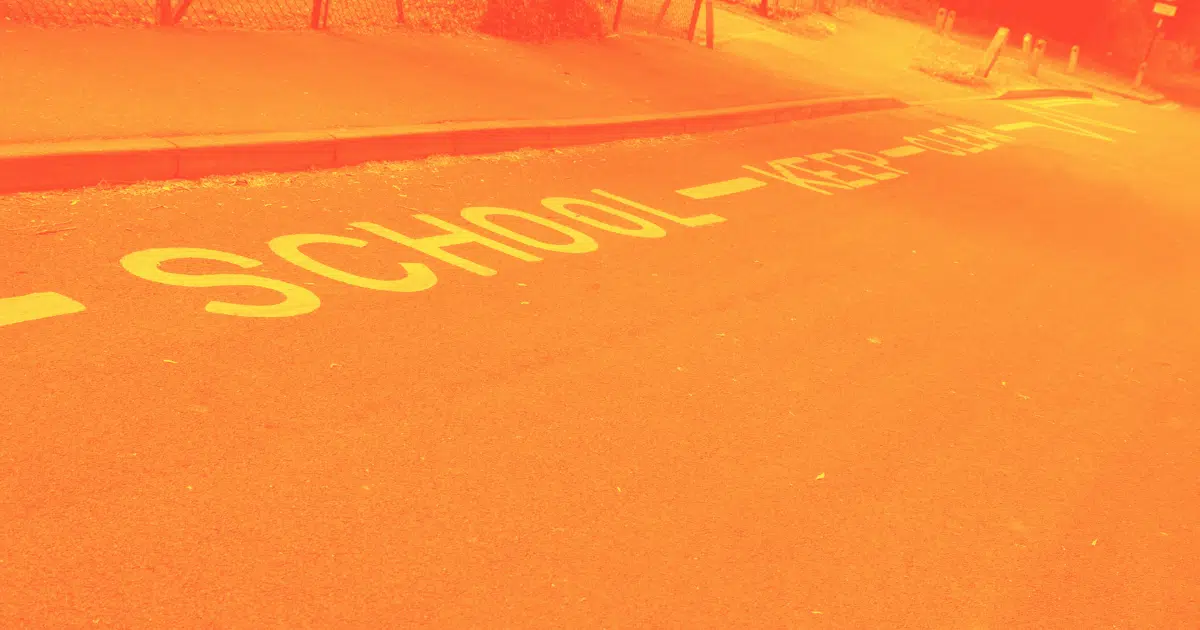Hello, Tappsters!
Congratulations – you have reached the point of the term where everyone says “it’s like we never had a holiday!”.
But the good news is we have LOADS of great edu findings to share with you 🥳.
Refer a Teacher Tapper
Back in the staffroom and making new teacher friends? Now is the time to send your special Teacher Tapp referral code to your friends and see how many sign up and tapp!
The great news is that with every referral, Teacher Tapp gives £5 to the charity Education Support – and so far £245 has been raised!
Referring is easy! Inside the app, you’ll find your own referral code to share. When a friend signs up with your code and answers for two days, £5 gets donated to Education Support to help teacher wellbeing. You can trigger up to £25 in donations, and the total pot is £5,000 — so let’s hit it fast! The campaign runs until September 30th, 2025 (or until the donations run out). Ready to spread the word? Let’s go! 💪📱
1. The rise and rise of phone bans
Ever since Teacher Tapp began, we’ve been asking about mobile phones. Do they disrupt? Are they confiscated — and if so, for how long? But perhaps the most important question is: what are the rules?
And things have definitely shifted!
- In 2018, just 3% of secondary teachers reported their school collected phones or used pouches.
- Today, that’s jumped six-fold to 18%.
- The number of schools telling pupils their phones must be out of sight all day has also risen — from 39% in 2018 to 56%.
This year we added ‘pouches’ to the ‘collected in’ option, as a few of you got in touch to say this was the approach your school has taken – thanks so much for your feedback – it definitely helps us make our questions better 💪.

But do teachers like these rules? Not always…
- In schools where phones are out of sight all day, only a third of teachers would choose that policy. More than half (57%) would prefer stricter rules (collected/pouches 38%, banned altogether 19%).
- Where phones are allowed at break and lunch, just 15% of teachers would pick that approach. Most (76%) would again go stricter, with collected/pouches (35%) being the most popular.
- Overall, the favourite policy among teachers is collecting phones in or using pouches — chosen by 41% of secondary teachers and 56% of primary teachers.
A smaller group are more relaxed:
- 14% would permit use in lessons when directed by the teacher — a view that varies by subject (23% of art & design teachers vs 9% of English teachers).
- 5% of secondary teachers would allow phones at break and lunch.
In summary, rules on phones are tightening, but teacher opinion is even stricter — most would prefer collection or pouches over current school policies. Want to read more? This report from The House of Lords takes a closer look at the evidence.
2. ⏰ Timetables, tricky classes, and home visits
Back to school and it’s time to learn new names, new timetables and get to know your fresh crop of learners!
But how are things shaping up compared to previous years?
Two week timetable
Timetables haven’t changed much since we last asked. Back in 2018, 60% of secondary schools were running a two-week timetable, and today that’s nudged up slightly to 65%. In primary schools the pattern is very different, with almost nine in ten (88%) sticking firmly to a one-week cycle.
When it comes to classes, more primary teachers now say they’ve been handed a notoriously tricky group compared to last year (40% vs 34%). In secondary, things look more stable, with around 43% reporting a particularly difficult class on their timetable – pretty much the same as last year.
Home visits
Meanwhile, in the early years and Key Stage 1, many schools have continued the tradition of welcoming Reception pupils with home visits. In fact, more schools are doing these visits than not (60% vs 40%). But it isn’t universal: of those doing them, around one in five only visit some of their new starters rather than all.
Laptops in the classroom
And finally, what about technology? Using a computer as a “normal way of working” is a common reasonable adjustment, but it plays out differently across primary. In EYFS and KS1, only 4% of teachers said that one or more of their pupils use a laptop as their usual way of writing. By KS2, that figure leaps up to 24%, showing how reliance on devices tends to grow as children move through school.
One of our Daily Reads this week dug into the topic of reasonable adjustments, including how schools can support pupils who use technology to access learning. You can catch it here.
3. Submitting lesson plans
Although of course all teachers plan their lessons – having to write the plan for someone else to read and then submit makes the task of planning lessons MUCH more time consuming. But how common is it to have to submit a lesson plan? The answer depends largely on the age of students you teach – and in both phases, things seem to be changing…
Primary schools
- In 2019, 11% of teachers said they had to hand in a plan for every lesson.
- Now, that’s dropped slightly to 9%.
- For lesson observations, requirements have eased too: from 9% in 2019 down to just 3% today.
Secondary schools
- It’s always been rare to submit a plan for every lesson—just 1% are expected to do so.
- But for lesson observations, the drop has been dramatic: from 16% in 2019 to only 6% today.
Are you pleased to see this fad fading? Or are you a teacher in a school where lesson plans are still required to be submitted? Share your thoughts by writing in england@teachertapp.co.uk or messaging through the app settings > contact us.
+ Bonus finding
Back to school means back to school uniform — and footwear is getting its own makeover.
Last year, Teacher Tappers told us expectations were shifting for both staff and students. So what’s happening with trainers?
Among primary teachers, permission to wear trainers has shot up from 65% in 2023 to 77% this year. In secondary schools, the numbers are smaller but rising too — 23% now wear trainers, up from 15%. That’s a big change in just two years!
And what about pupils? Schools that let teachers wear trainers are far more likely to extend the same rule to students. In primary, 54% of those schools also allow pupils to wear trainers, compared with just 22% where staff can’t. In secondary, the pattern is similar: 62% vs 16%.

Daily Reads
Back to school attendance was hitting headlines – and so it makes sense that it was the blog on register codes was our most read!
Have you seen a great blog you think would make a great daily read? Let us know by emailing england@teachertapp.co.uk and we will check it out!





